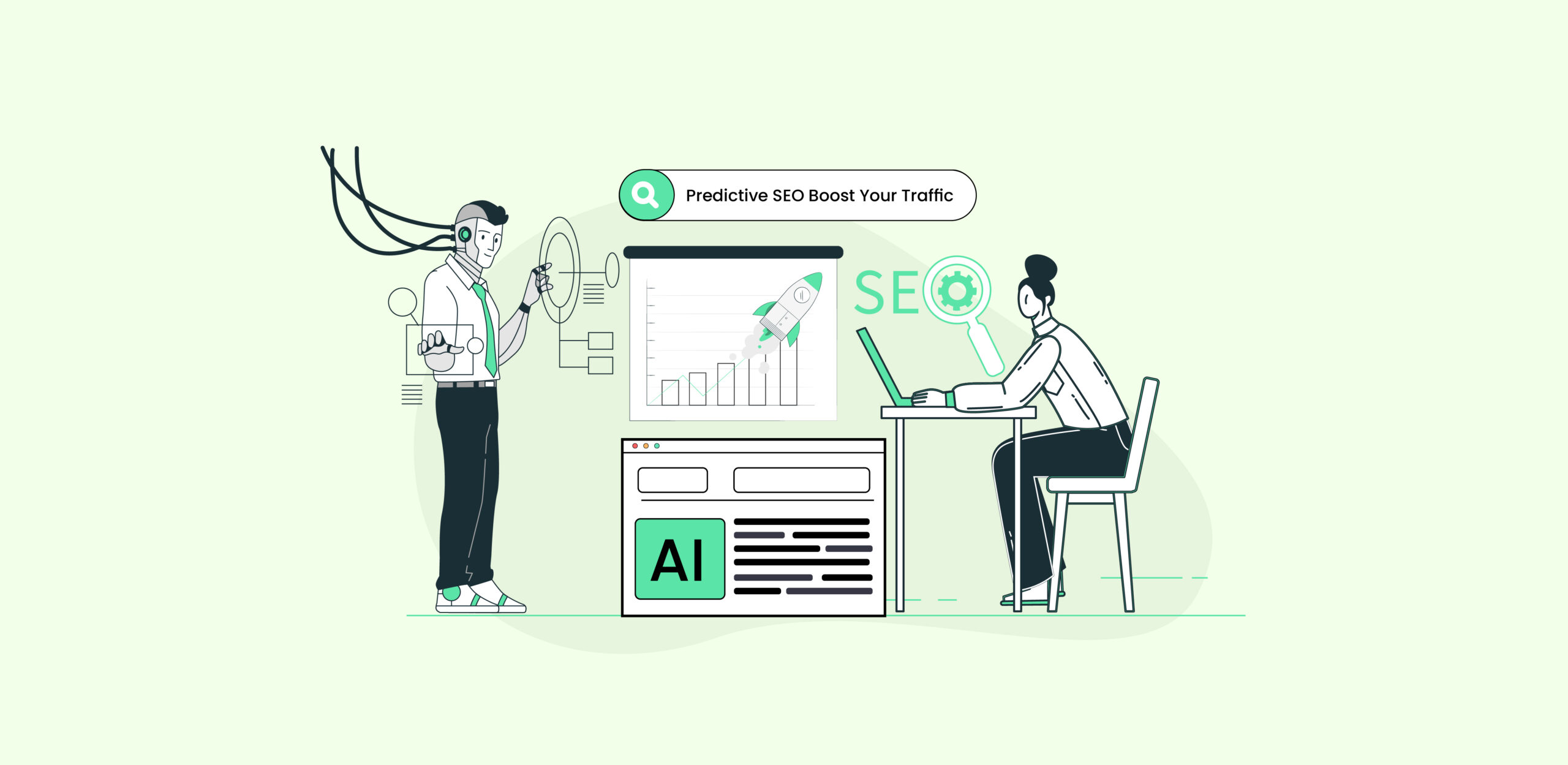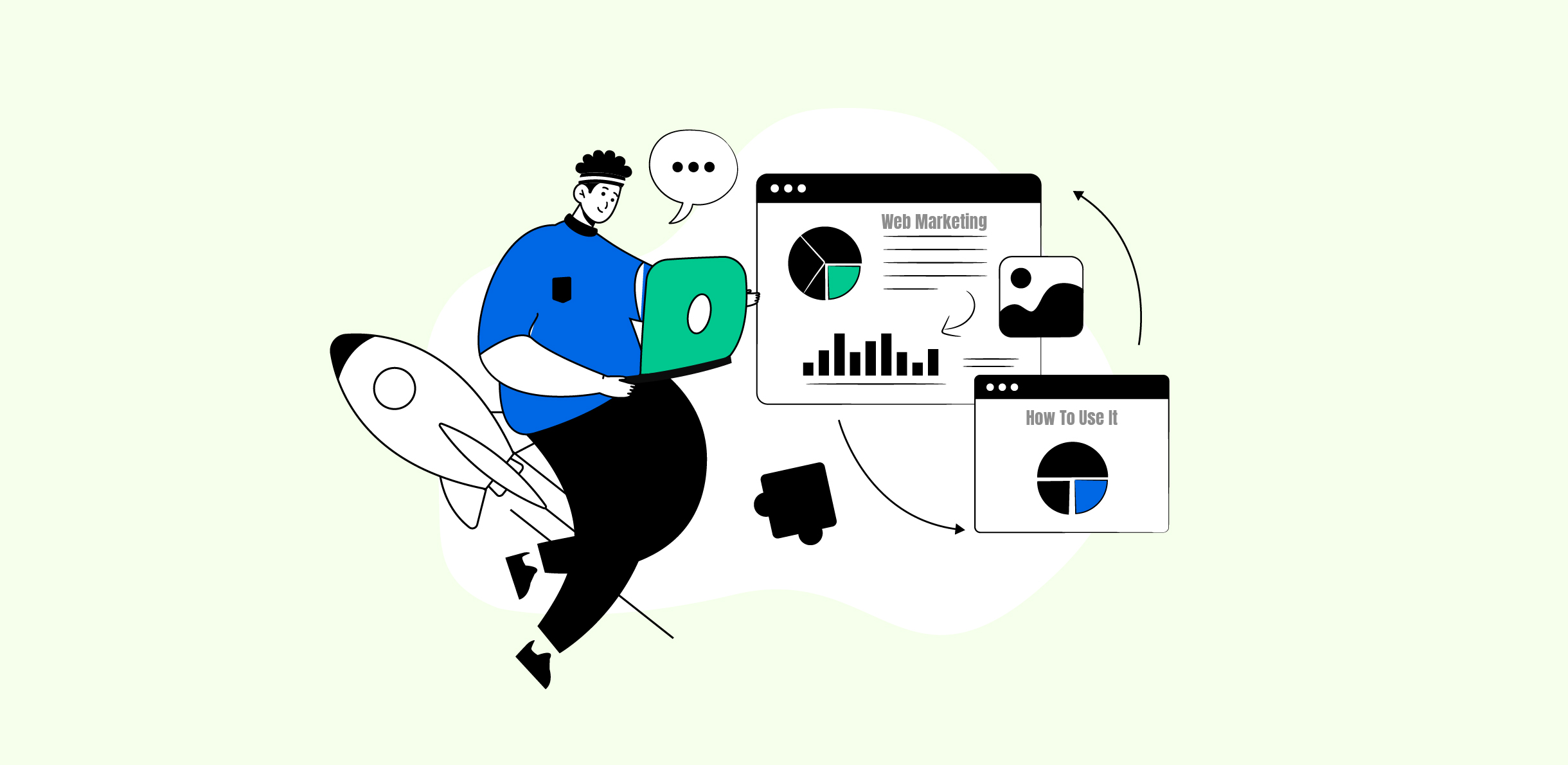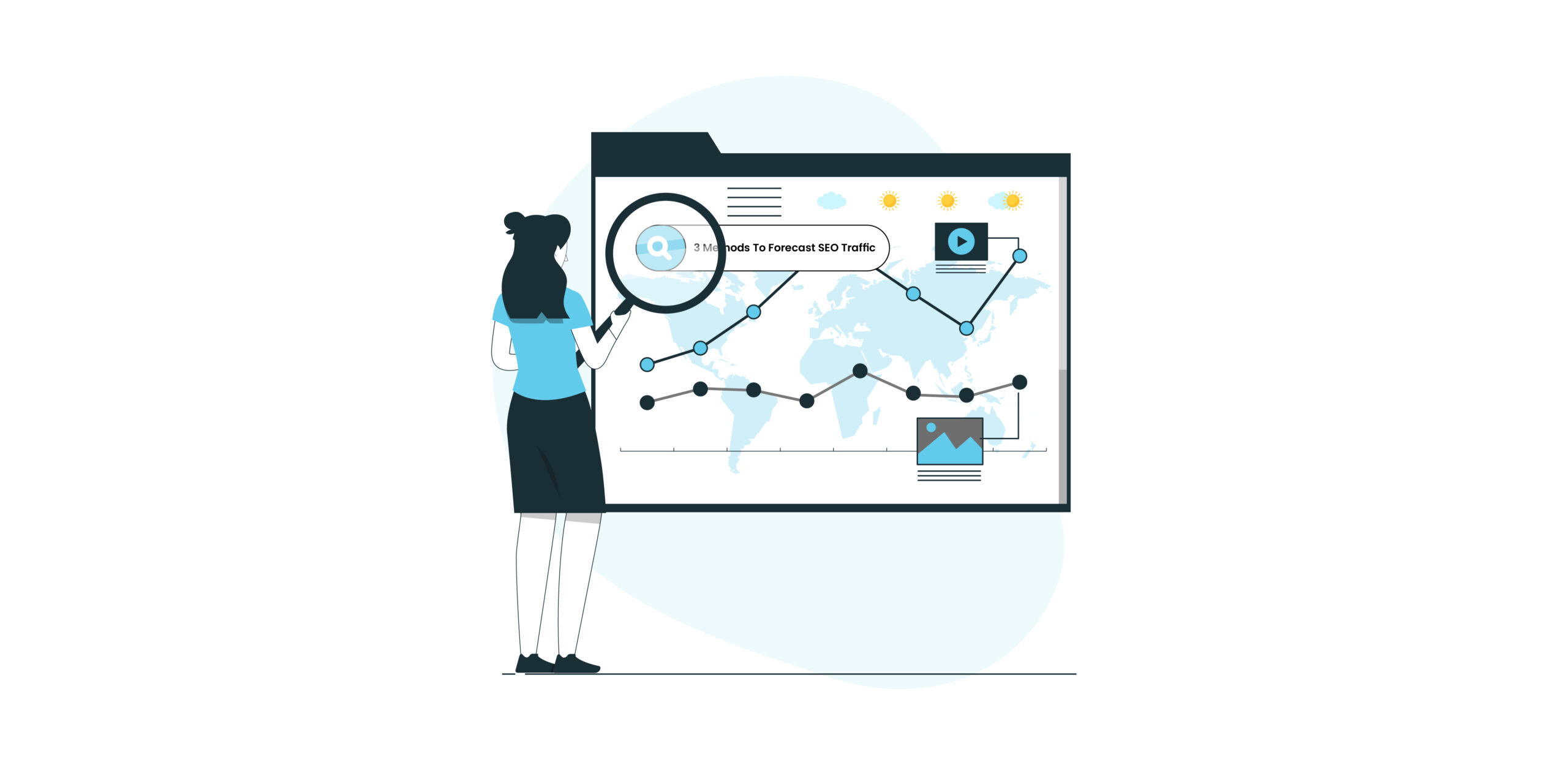Search engine optimization (SEO) is getting more sophisticated as predictive analytics and AI take center stage. These advancements are changing search in exciting and novel ways. However, with so many brands already commanding the top positions on search engine results pages (SERPs) for high-traffic keywords and phrases, you may find it challenging to rank new content for those coveted spots. So, what do you do? You don’t have a magic wand that will magically push your content to the top overnight and dislodge deeply entrenched competitors.
While you can’t foretell exactly what Google will rank next, you can actually tap into specific keywords before they become popular. Yeah, this isn’t some speculative crystal-ball gazing, nor is it a guaranteed shortcut to the top. Think more like capitalizing on trends, data, and insightful analysis to anticipate or predict shifts in search demand. That’s how you position your content strategically before your competitors flood the market.
Predictive SEO uses AI and other predictive techniques to create more engaging and impactful content. Wouldn’t you jump at the opportunity if you could predict what keywords would rank on SERPS in the future?
What is Predictive SEO?
Predictive SEO leverages data from multiple sources to forecast anticipated user behavior and future search trends. In other words, you predict how online users will look for information in the future. Unlike conventional SEO, which is geared toward optimizing content for current keywords and trends, predictive search engine optimization aims to spot and capitalize on upcoming trends and behavioral shifts before they become mainstream.
A word of caution here – predictive search is not the same as predictive SEO. So, what is predictive search? It is an intelligent system that anticipates user intent and suggests relevant results in real-time as users type. When SEOs talk about predictive search in Google’s search engine, they are primarily referring to its renowned “Autocomplete” feature (formerly called Google Suggest). As you begin typing into the Google search bar, it instantly generates a dropdown list of predicted completions.
Sorry for that little detour; now back to predictive SEO. Let’s understand it with an example – recall what happened during COVID-19. We know it won’t conjure up pleasant memories but just bear with us. During the coronavirus people were cooped up in their homes. As working from home became a trend, the demand for communication software and project management tools like Asana and Skype increased.
There was a surge in online searches for remote work tools such as Slack and Zoom as video conferencing became essential. A company using predictive SEO could have analyzed the following early indicators:
- News reports about lockdowns in other countries
- Increasing mentions of “remote work” on social media
- Even initial, subtle shifts in search queries related to “home office setup” or “virtual collaboration.”
By identifying these nascent trends, the organization could have proactively created in-depth content around various topics. Some examples are:
- Best video conferencing tools for small businesses
- How to set up a productive home office
- Managing remote teams with project software.
This would have allowed the company to rank for these terms before the explosion in demand. Isn’t that a great way to capture significant organic traffic and establish authority in a rapidly emerging niche? We think it’s much better than trying to play catch-up once the market is saturated.
Need another example? Sure! Let’s say you’re a news website. You may use predictive SEO to identify upcoming trends or emerging news topics like national elections that will likely generate plenty of interest. After that, be the first to produce and publish content on these trending topics. This could give you a substantial traffic boost and a leg up on your competition.
Benefits of Using Predictive SEO
So, why should you use predictive SEO? Perhaps, a better question is why wouldn’t you use it? Yes, we know you are thinking that it adds yet another step to the already-lengthy content creation process. That’s true but just look at the many benefits of anticipating customer demand and providing them with valuable information and insights before they need it.
Identify Trending Topics and Keywords before Your Competitors
With predictive SEO, you can forecast which keywords and topics will likely become popular. This is a great way to beat your competitors to the punch and create and optimize content before they do. If you follow this proactive approach, you are more likely to secure higher rankings, web traffic, and authority as soon as search interest spikes.
Keep Your Content Calendar Updated
Beyond gaining an early lead on trending topics, predictive SEO and proactive search behavior analysis offer another critical advantage. Updating your content calendar won’t be a chore anymore as it takes the hassle out of content planning. No longer are you reacting to current search trends or scrambling to produce content for already saturated keywords.
Instead, using proactive insights and predictive analytics, SEO and content experts can devise a proactive, dynamic, and continuously relevant content strategy. This ensures that your editorial schedule aligns with future audience needs and market shifts.
Let’s say you run a record label. On the basis of past search behavior, you notice that posts about heavy metal and hard rock artists, especially horror-themed music and goth rock, typically improve traffic around Halloween.
With a traditional approach, you may scramble in September to churn out content. However, with predictive SEO and SEO trend forecasting, you’d analyze this historical data and prioritize planning and creating that heavy metal content several months before October. This foresight ensures your content is optimized and poised to capture that surge in search interest when it spikes and you don’t have to play catch-up.
Competitive Advantage
When you are the first to address emerging topics and trends, positioning yourself as an industry leader becomes easier. For example, when a new trend such as a viral diet emerges, brands that publish relevant content first are more likely to rank highly and attract backlinks. You’re not merely reacting to trends and struggling to keep up with your competitors; instead, aren’t you setting the pace for them to follow?
And if you are in a highly competitive niche, this edge is especially valuable. This is because being first can mean capturing the majority of organic traffic.
Better SEO Performance and Rankings
Anticipating future search behavior and changes in customer tastes allows for preemptive content and technical optimization. If you’re looking to boost visibility on SERPs, this may just do the trick. You will likely notice a sustainable organic traffic growth, and may even partially insulate yourself from the risk of sudden algorithm updates.
Efficient Resource Allocation
Whether it is limited budgets or stringent deadlines, content creators are often challenged to deliver results on a lean budget. However, with predictive SEO, businesses can focus their efforts and time on high-potential keywords and topics. There’s less trial and error. As a result, this targeted and efficient approach maximizes ROI since you’re not wasting resources on low-impact content that’s unlikely to gain traction.
Implementing Predictive SEO to Improve Your Traffic
So, you’re convinced that predictive SEO isn’t just smoke and mirrors, but a genuine strategy to get ahead of the curve. That’s awesome but how do you actually use this strategy to improve your visibility and get more traffic? It is a methodical approach that uses data, AI, and a good old-fashioned dose of foresight to anticipate future trends.
Let’s see how you can move from reactive to proactive SEO with this predictive method. No more playing catch-up; it’s time to set the pace.
Define Clear Objectives
Before diving deep into data, ask yourself: what exactly do you want to predict? Perhaps, you are looking to anticipate the next viral keyword. Maybe you just want to keep your rankings steady. Being specific is key and will help you focus your efforts and choose the right tools.
Clean and Organize Your Data
The old idiom, garbage in, garbage out, holds true for predictive SEO as well. Before any fancy AI can do all the heavy lifting, make sure your data is squeaky clean. This usually involves removing duplicates and filling in any missing values. You may also have to standardize formats.
You can only go so far with messy data. Structure it neatly (CSV files, databases, whatever floats your boat) for seamless modeling.
Analyze Past Data
Time to dig into the goldmines of information you already have! Google Analytics, Search Console, and SEO tools like SEMrush or Ahrefs expedite data analysis, saving time and hassle. If you have a knack for identifying patterns, this will be an engaging exercise for you. It’s comparable to checking the weather forecast based on years of meteorological data – not perfect, but definitely a lot better than guessing. You can use a plethora of tools as your digital assistants in this endeavor:
- Clearscope: Helps optimize content by peering into predicted search intent and keyword trends.
- Surfer SEO: Get a sneak peek into which content adjustments will actually move the needle on rankings. SERP analysis gives a good idea. Let’s say you run a fitness apparel business. You can use Surfer SEO to predict that “HIIT for beginners” will be the next big workout trend. You can proactively update product descriptions and blog content to capture that impending surge.
- MarketMuse: Forecasts topic demand, allowing you to plan content way before everyone else jumps on the bandwagon.
Develop Predictive Models to Develop Your Forecast
Now it is time to figure out how the future may pan out. Techniques like regression analysis and time-series analysis are ideal for forecasting outcomes like future traffic spikes or potential ranking shifts.
Conduct Trend and Content Gap Analysis
Besides anticipating what’s coming, you also have to figure out what’s missing. A simple way to get a feel for what’s not there is to utilize tools like Google Trends to know what your competition is up to. These questions can be relevant:
- Where are the emerging topics that no one else has covered comprehensively yet?
- Where are the keyword gaps that are about to blow up?
Let’s say you identify that “AI-powered productivity tools” is steadily gaining traction in searches. This reflects an emerging shift in user intent from general curiosity about AI to a more specific desire for practical applications that enhance efficiency. So, what can you do here? Creating a comprehensive pillar content piece on the topic will help you position yourself as the go-to resource before the gold rush begins.
Implement and Optimize Content Strategy
This is the stage where all the analysis and forecasting work pays off. Based on your predictions, you can update your existing content. The other option is to create entirely new pieces targeting those high-potential keywords and topics. While content creation is vital, don’t let the technical SEO fall by the wayside – optimize website speed and mobile-friendliness based on anticipated user behavior.
As a travel blogger, you may run against the wall trying to come up with new and interesting content ideas that haven’t already been covered extensively by countless other travel publications. However, this is where SERP trend prediction tools and forecasts can come in handy.
Let’s say you anticipate a surge in “eco-friendly travel” interest. Travelers are prioritizing environmental responsibility and sustainability when choosing where to stay and dine. You can publish a comprehensive and insightful guide just as the trend hits its peak. It is a great way to scoop up early organic traffic and leave competitors in the dust.
Monitor Results and Refine Approach
Predictive SEO isn’t a one-and-done task or something you do once in a blue moon. It is an iterative process – one that thrives on constant analysis, refinement, and adjustment. As the online world is always shifting and marked by the emergence of notoriously-fickle trends, you must continuously track and evaluate the performance of your predictions.
Did your predicted traffic spike actually materialize? Monitoring and refining your approach based on real-world outcomes helps keep your strategy sharp and your content always a step ahead.
Final Thoughts
Predictive SEO is the future of a data-driven content strategy, empowering brands to anticipate customer needs and target emerging keywords. Hopefully, now you know how to increase traffic with predictive SEO. Using predictive content optimization, AI and ML algorithms can also anticipate content performance and predict user preferences more accurately.
No doubt, predictive analytics offers unique insight into SEO trends, but keep in mind that it can’t predict every variable perfectly. For example, if an unforeseen competitor pops up or there’s a shift in how customers behave, this can knock you for a loop and derail your analytics. So, while it is a powerful and important tool to have in your arsenal, just like with most things marketing-related, you’ve to be flexible and ready to adapt as things change.
Many digital marketers and content strategists take a reactive rather than an informed and proactive approach to SEO. So, it’s not surprising that they find it difficult to adapt to industry trends and seasonal changes. However, with data-driven SEO techniques, you can glean actionable insights that help you make informed decisions to boost rankings and drive more traffic to your website. Implementing predictive SEO not just helps you stay steps ahead of your rivals; it also helps ensure your marketing efforts stand the test of time.








